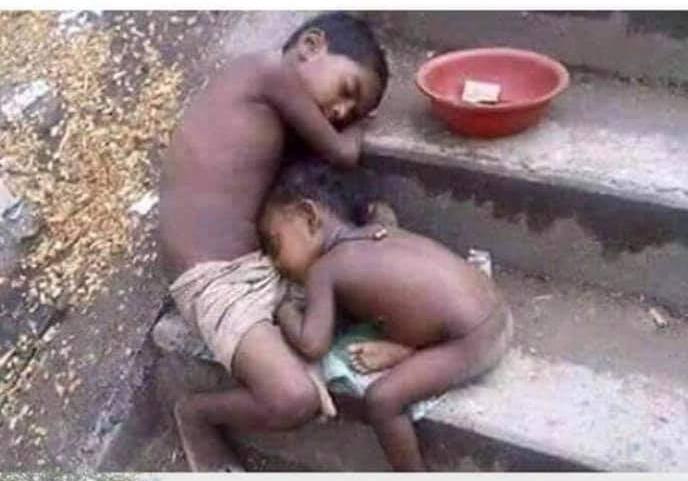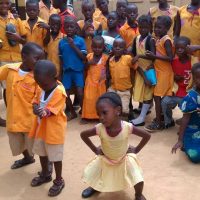Violence Against Children Must Stop

Our attention has been drawn to the rampant violence against children in all settings, particularly in the field of juvenile justice and most recently with a focus on gender-based violence among the Ghanaian populace and want to condemn it with the vehement it deserves.
The perpetrators are often those closest to the children like their parents, guardians, teachers and even the police, the individuals who are meant to protect them.
Violence is a global epidemic and an unfortunate daily reality for millions of children. Children of all ages, all genders, all social contexts, and all nationalities are beaten, sexually assaulted, tortured, and sometimes killed. Violence takes place in their homes and families, schools, institutions, workplaces and communities.
We join efforts to advocate for the elimination of violence against children with the UN human rights mechanism for the implementation of the Sustainable Development Goals, especially target 16.2 on ending abuse, exploitation, trafficking and all forms of violence and torture against children.
Some progress in the adoption of legal instruments has been achieved, yet some of the worst forms of violence remain lawful around the Ghanaian populace and some estimates report that at least about a thousand children endure some kind of violence every year.
We therefore advocate at all levels for the elimination of violence against children, and it will remain one of its thematic priorities at all levels of implementation.
We are by this Statement raising awareness on hidden issues in violence against children and advocating for governments to take action on the recommendations made in the UN study on violence against children since Ghana was the first country to ratify the UN Convention on the Rights of the Child (1990) and has signed or ratified most major international instruments relating to child protection.
Ghana has also ratified the African Charter on the Rights and Welfare of the Child (2005) while the 1992 Constitution establishes the rights of the child and provided the framework for the enactment of appropriate legislation to protect the rights of children.
The Children’s Act, 1998 (Act 560) provides for the rights of the child and covers issues of parental duties and responsibilities, maintenance, adoption and fosterage; it protects children from exploitative labour and child marriage and stipulates responsibilities for care and protection of children. The Juvenile Justice Act 2003 (Act 653) also deals with the child in conflict with the law.
Other national laws on children include Criminal and other Offences Act, 1960 (Act 29); Intestate Succession Act, 1985 (PNDCL111); the Human Trafficking Act, 2005 (Act 694; the Domestic Violence Act, 2007 (Act 732).
Child related policies and plans of action include the National Plan of Action (NPA) on Child Labour and the Worst Forms of Child Labour, 2009-2015; the National Plan of Action (NPA) on Orphans and Vulnerable Children (OVC), 2010-2015; the Early Childhood Care and Development Policy, 2004; the National Domestic Violence Policy and the Plan of Action, Hazardous Child Labour Framework.
Gender and Children’s Policy Standards have also been developed for some child and family welfare services, such as residential homes for children.
While the legal, policy and regulatory framework is comprehensive, there is a disconnect between law and practice, and between the laws and community approaches to dealing with child and family welfare issues, with no overarching national policy for the delivery of comprehensive child and family welfare services.
We are calling on the Ministry of Gender, Children and Social Protection to lead and coordinate implementation of the Policy as the “technical lead ministry” for the Child and Family Welfare system and will be expected to ensure prevention and response service delivery and mainstream the Policy into sector plans and policies.
There should be awareness creation among MMDA’s sub-structures and communities on child protection and related interventions to build capacity (institutional and staff) of the Departments of Social Welfare and Community Development to effectively implement activities in the Action Plan of the Policy to facilitate the documentation and dissemination of best practices and key activities of child protection in the country.

Social Welfare and Community Development should effectively collaborate to address child protection issues to facilitate linkages between social welfare and protection interventions, facilitate the involvement of traditional authorities and processes at community level in child protection issues.
They must also develop and implement MMDA-specific Action Plan to implement the Policy and ensure that awareness of interventions are available to the benefit of community members through relevant forums and channels.
However, since children are at home due to the closure of schools, we call on parents to take their children to their workplaces if possible to keep them from loitering and monitor their movement to know their whereabouts to protect them from unscrupulous people who may use them for their selfish gains.
Story: Seth Ameyaw Danquah





